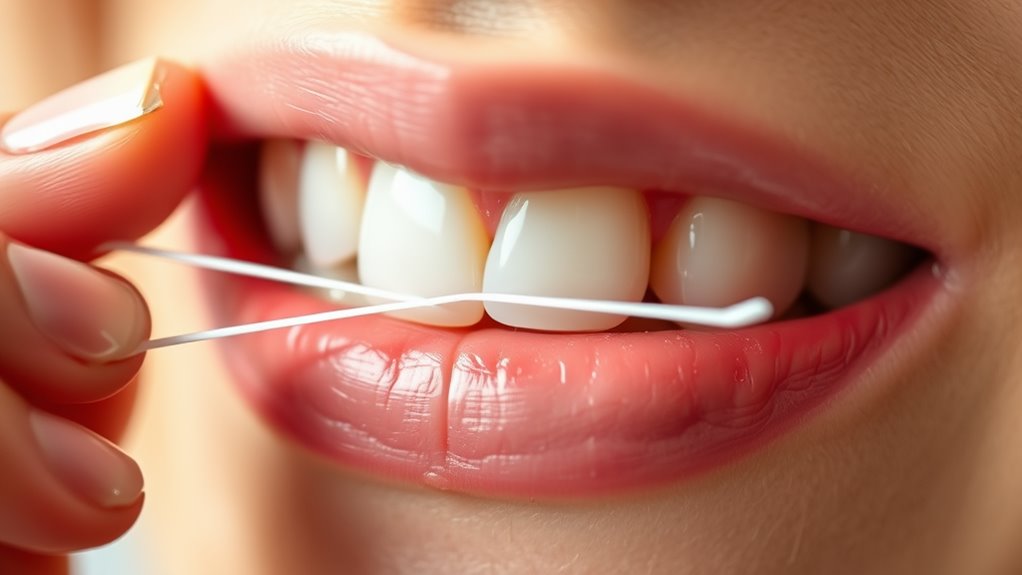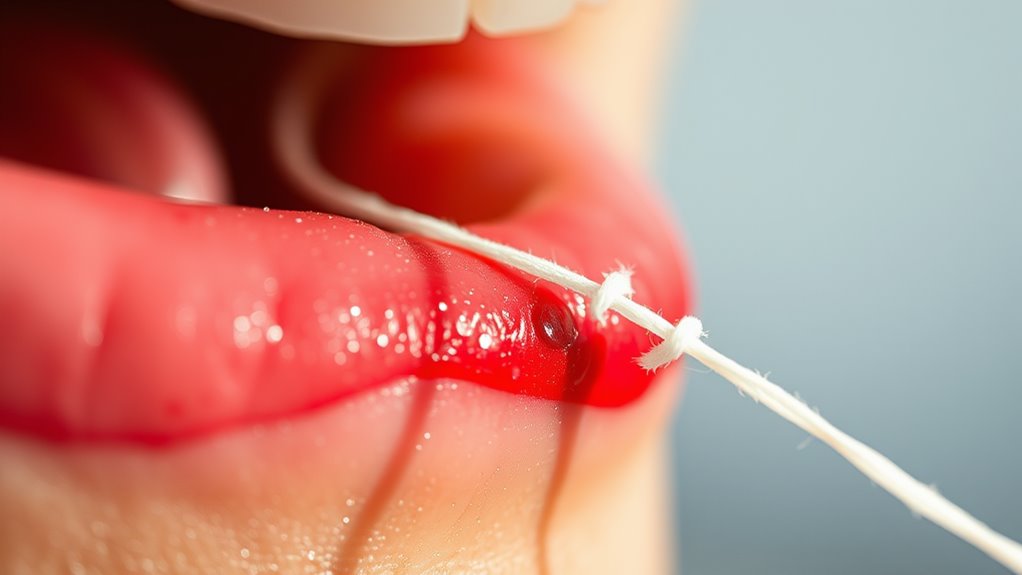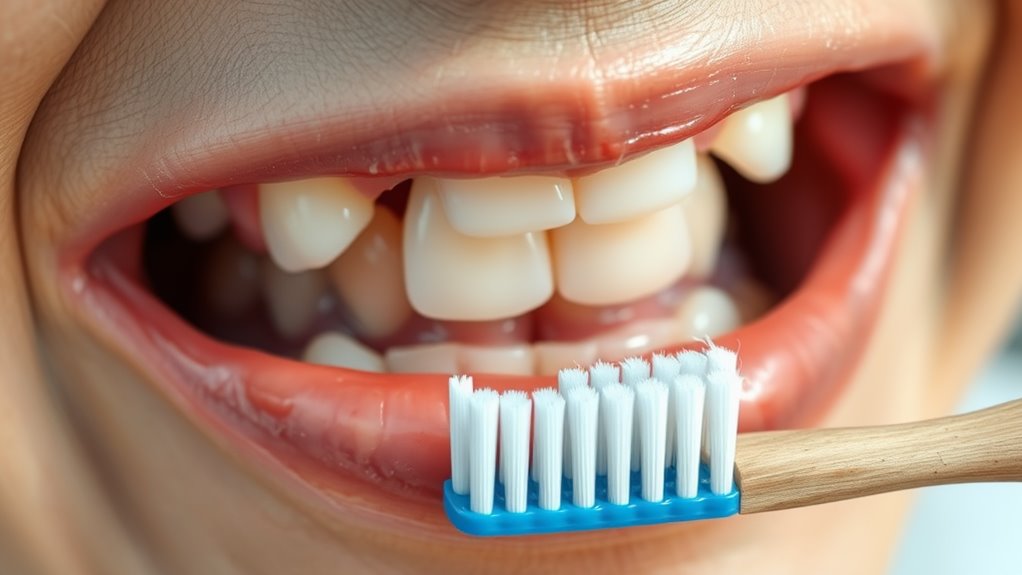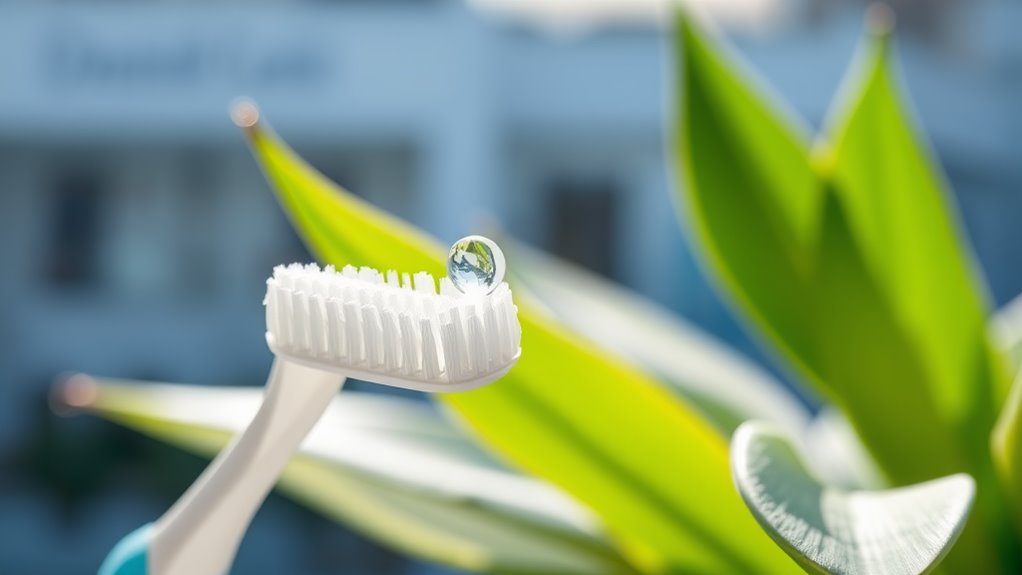Why Your Flossing Technique Might Be Harming Your Gums!
Your flossing technique might be doing more harm than good. If you’re using too much force or snapping the floss, you could be irritating your gums. This can lead to swelling and even bleeding, which are signs that something’s off. Understanding how your approach affects your gum health is crucial. So, what should you be doing instead to protect your gums and maintain optimal hygiene? Let’s explore the details.
Common Flossing Mistakes to Avoid
Many people unknowingly make common flossing mistakes that can undermine their gum health. You might think you’re doing everything right, but even small errors can lead to big problems.
For instance, if you’re snapping the floss between your teeth instead of gently sliding it, you could be damaging your gums. It’s also essential to use enough floss—if you’re reusing a small piece, you’re not getting the clean you need.
Another common mistake is neglecting to floss behind the last tooth. This area often gets overlooked but is crucial for preventing gum disease.
Plus, don’t forget to be consistent; skipping days means you’re not giving your gums the care they deserve. By recognizing and correcting these flossing mistakes, you can join a community of people committed to maintaining healthy smiles. Remember, using a gentle touch while flossing can prevent gum irritation and enhance your oral hygiene routine.
The Impact of Aggressive Flossing on Gum Health
While you might believe that aggressive flossing ensures a thorough clean, it can actually harm your gum health. When you apply too much force, you risk damaging the delicate gum tissue, leading to inflammation and even gum recession. It’s essential to recognize the difference between effective cleaning and excessive pressure. Gentle flossing is crucial for maintaining gum health.
| Effect of Aggressive Flossing | Consequence |
|---|---|
| Gum irritation | Increased redness and swelling |
| Gum recession | Exposure of tooth roots |
| Bleeding gums | Sign of trauma |
| Increased sensitivity | Discomfort while eating |
| Long-term damage | Potential for periodontal disease |
Instead of a harsh approach, aim for gentle, consistent care. Your gums deserve kindness, and by being mindful, you can maintain a healthy smile that makes you feel connected and confident among friends and family. Remember, it’s about quality, not just quantity.
Proper Flossing Techniques for Optimal Care
To achieve optimal gum health, mastering proper flossing techniques is essential. You want to ensure that your gums feel great and stay healthy, so follow these simple yet effective tips:
-
Use about 18 inches of floss****: This length gives you enough to wrap around your fingers and control the floss easily.
-
Gently slide the floss between your teeth: Avoid snapping it, as this can irritate your gums.
-
Curve the floss into a C-shape****: This helps you hug the tooth and clean below the gumline effectively.
-
Use a clean section for each tooth: Shift the floss as you move from tooth to tooth to prevent spreading bacteria.
-
Be consistent: Floss at least once a day to keep your gums happy and healthy.
-
Remember that alternatives like interdental brushes can also effectively clean between your teeth and enhance gum health.
Signs Your Flossing Method Is Harming Your Gums
Even with proper flossing techniques, you might notice signs that your method isn’t working for your gums. It’s crucial to listen to your mouth—here are some red flags to watch for:
| Sign | What It Means | Action to Take |
|---|---|---|
| Bleeding gums | Inflammation from harsh flossing | Switch to a gentler technique |
| Swollen gums | Irritation or trauma | Evaluate your flossing pressure |
| Pain while flossing | Possible gum damage | Consult your dentist |
| Receding gums | Long-term damage from improper use | Seek professional advice |
| Bad breath | Bacteria buildup due to poor cleaning | Review your overall oral care |
If you notice any of these signs, don’t ignore them. You deserve healthy gums, and adjusting your flossing method can make a world of difference! Remember, good oral hygiene is essential for preventing serious health issues.
Expert Tips for Gentle and Effective Flossing
When you want to maintain healthy gums, mastering the art of gentle and effective flossing is essential.
Follow these expert tips to make your flossing routine a caring ritual for your smile:
-
Choose the Right Floss: Opt for waxed or gentle floss to glide smoothly between teeth.
-
Use a Comfortable Grip: Wrap the ends around your fingers to keep control and avoid unnecessary pressure.
-
Be Gentle: Slide the floss gently up and down, avoiding harsh sawing motions that can irritate gums.
-
Curved Technique: Curve the floss around each tooth in a C shape, ensuring you clean beneath the gum line.
-
Rinse After: Finish with a mouth rinse to wash away debris and leave your mouth feeling fresh. Remember that aggressive brushing can also contribute to gum recession, so always combine your flossing with gentle brushing techniques for optimal gum health.




